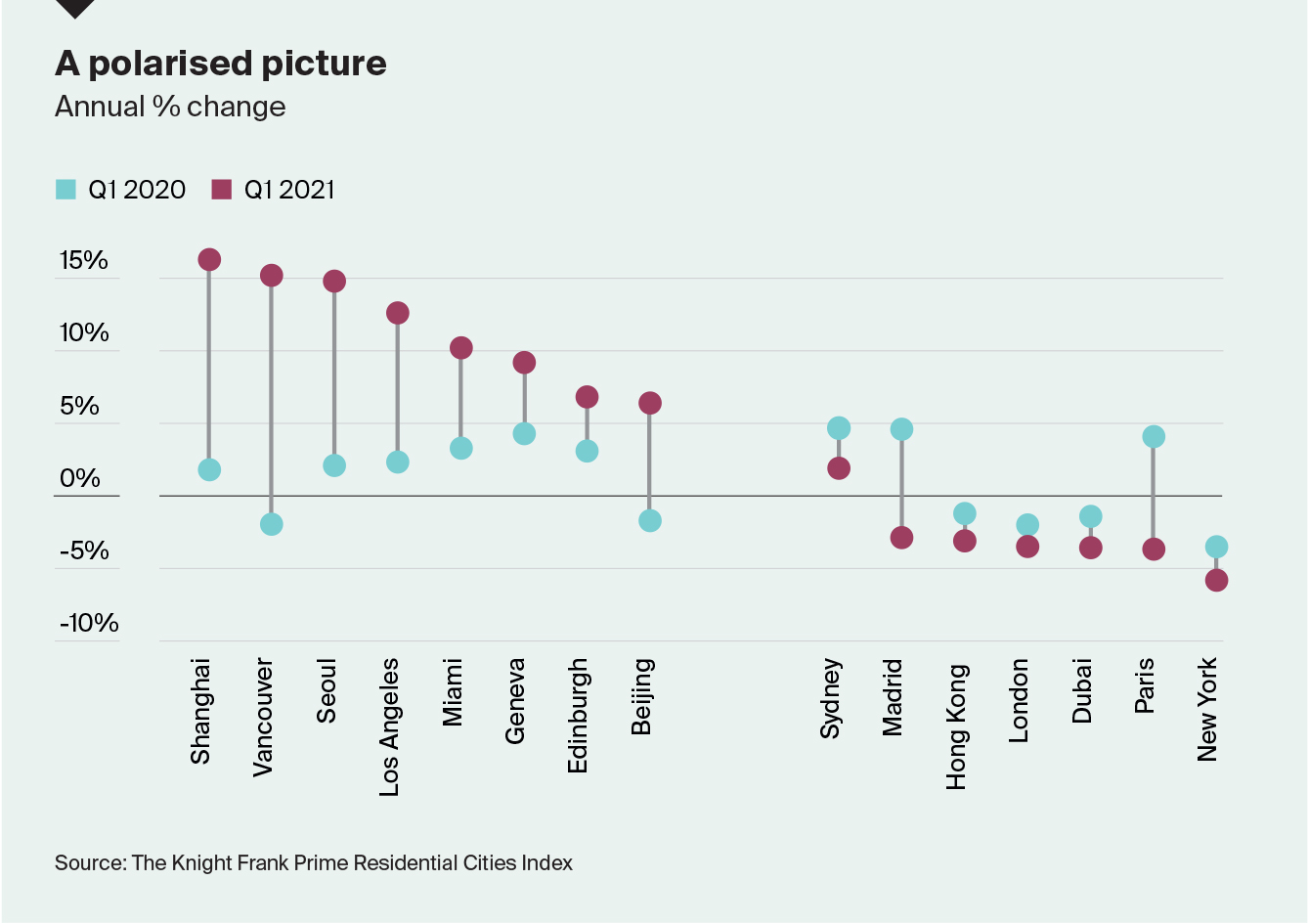Prime prices in key global cities are rising at their fastest rate since 2017
Globally, prime residential prices are rising at their fastest rate since Q4 2017.
2 minutes to read
Prime prices, defined as the top 5% of the housing market in value terms, increased 4.6% on average in the year to March 2021.
Eleven cities registered double-digit priced growth up from just one a year ago.
Low mortgage rates – record lows in some markets – tight stock levels and a desire for space post-lockdown have led to an uptick in demand.

Three Chinese cities – Shenzhen (+19%), Shanghai (+16%) and Guangzhou (+16%) – lead the index this quarter with improving economic sentiment and government investment in the Greater Bay Area of China behind the acceleration. Buyer enthusiasm has persisted despite a new round of curbs being introduced in January.
Vancouver and Seoul (both +15%) complete the top five rankings, here successive cooling measures have been deployed to reduce speculative activity in recent years but local appetite for homebuying remains undeterred. Residential sales in Greater Vancouver increased 22% in 2020 year-on-year.
Auckland, the index’s previous frontrunner, has seen prime prices moderate. The slowdown from 18% to 8% is in part due to the base effect – prime prices in Q1 2020 were notably higher than in Q4 2019 but also the introduction of a new capital gains tax (CGT) for non-primary residences which are bought as an investment and held for less than 10 years. Add to this President Biden's tax proposals and we are already seeing one of the key themes in The Wealth Report 2021 – the push to curb wealth imbalances exacerbated by the pandemic – gather pace.

However, prime prices aren’t rising everywhere.
Some of the world's top metropolises, New York (-6%), Dubai (-4%), London (-4%), Paris (-4%) and Hong Kong (-3%) are seeing prices soften. There are a combination of factors behind each city's negative growth, from long and stringent lockdowns to a backlog of supply and from higher taxes to policy constraints, but in most cases we expect a return to growth in the second half of 2021 once travel bans ease, cross border transactions resume and consumer confidence ticks upwards.
Please contact Kate Everett-Allen for more details.
Photo by Lee Robinson on Unsplash